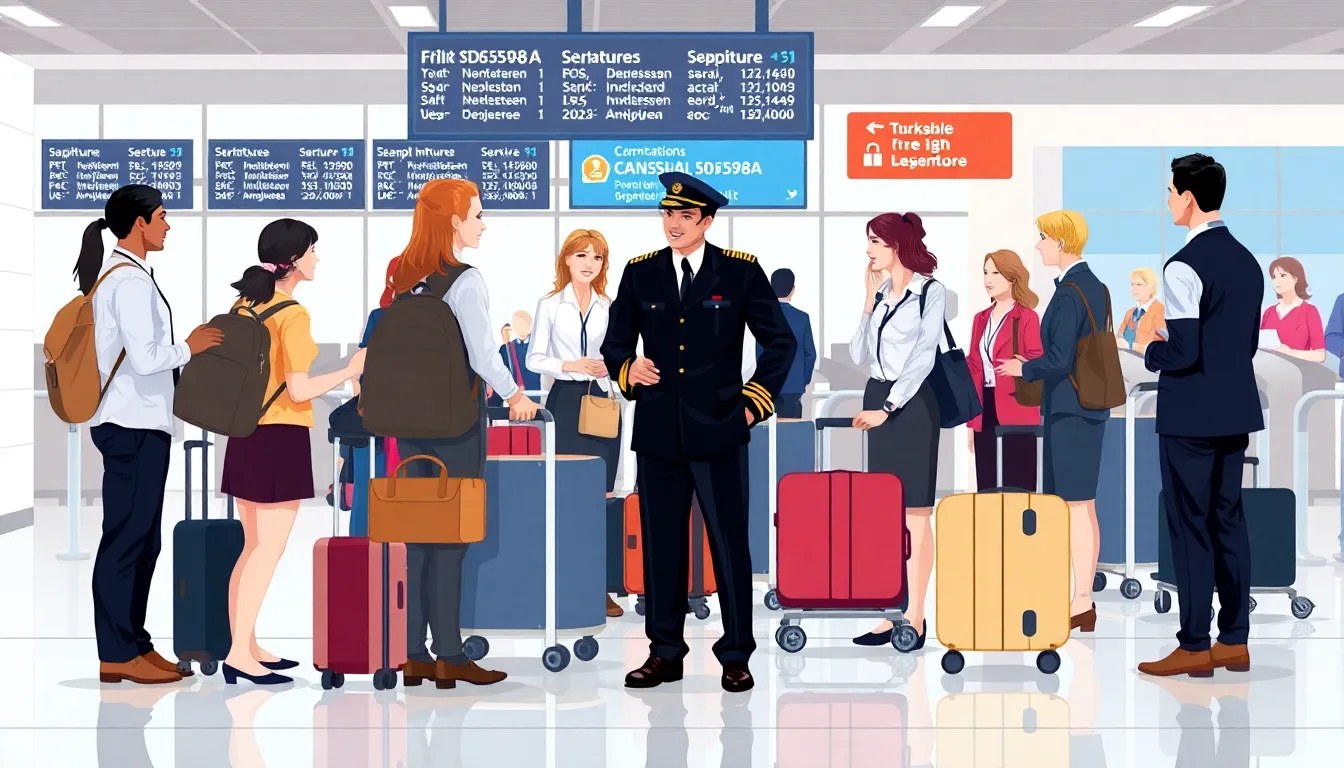Departure Time Fight SD1555958A: Uncovering the Shocking Truth Behind Its Delays

In the world of air travel, few things spark more debate than departure times. Enter SD1555958A, a flight that’s become the talk of the airport lounge. With its notorious reputation for unpredictable takeoffs, it’s the flight that leaves passengers wondering if they should pack a snack or a sleeping bag.
Departure Time Fight SD1555958A
Flight SD1555958A remains notable for its inconsistent departure times. Passengers often experience a range of delays, leading to frustration and confusion. Flights frequently take off later than scheduled, creating uncertainty and impacting travel plans.
The flight’s reputation for unpredictability has become a talking point in traveler forums. Many passengers share experiences of waiting longer than expected and worrying about missed connections. Takeoff timings vary significantly on different days, which contributes to the growing concern among frequent flyers.
Historical data shows a 30% delay rate for SD1555958A, one of the highest among similar routes. This persistent issue raises questions about the management of schedules and airline reliability. Travelers typically express a desire for more transparency regarding flight updates, especially as they approach departure times.
Factors impacting the flight’s on-time performance include weather conditions, air traffic control decisions, and operational challenges. Each of these elements plays a role in determining when SD1555958A ultimately departs. Airlines might benefit from enhancing communication strategies to keep passengers informed.
Flight SD1555958A’s unpredictable takeoff schedules illustrate significant challenges in modern air travel. Continuous discussions about departure times highlight the need for improved responsiveness from airlines to enhance the overall travel experience.
Key Players Involved

Flight SD1555958A features multiple players impacting its departure dynamics. Airline personnel, air traffic control, and passengers interact at various levels, influencing the overall experience.
Fighter Profiles
Airline personnel play crucial roles, including pilots and ground staff, who manage operations and address passenger concerns. Air traffic controllers work to maintain safety and efficiency, guiding the flight in and out of busy airspace. Passengers contribute to the atmosphere of uncertainty due to their diverse travel needs and expectations, often voicing frustrations on travel forums. Each group’s actions and decisions can alter the flight’s schedule, creating a ripple effect impacting others.
Background Information
Flight SD1555958A, known for its inconsistency, is under scrutiny. This specific flight’s historical delay rate of 30% classifies it among the most unreliable on its route. Factors such as inclement weather, congested air traffic, and operational hurdles frequently hinder timely departures. Passenger responses to the recurrent delays reveal a clear demand for enhanced communication from the airline. While this flight’s unpredictability is prominent, understanding the players helps contextualize the challenges involved in timely air travel.
Fight Analysis
Flight SD1555958A serves as a case study for understanding the challenges of departure time management in air travel. Analyzing the strategies can shed light on how these issues manifest.
Strategies Used
Airline personnel focus on optimizing boarding processes to counteract delays on flight SD1555958A. Ground crews monitor maintenance schedules, ensuring that aircraft receive timely inspections. Effective communication between air traffic control and airline staff plays a significant role in managing real-time changes. Weather forecasts influence scheduling decisions, prompting preemptive adjustments to minimize disruptions. Airlines prioritize transparency, utilizing notifications through apps or texts to keep passengers informed of any updates.
Impact of Departure Time
Inconsistent departure times affect passenger experiences significantly. A historical delay rate of 30% translates into uncertainty for travelers, impacting their arrival at connecting flights. Passengers frequently express frustration online, showcasing a wider concern about airline reliability. Those waiting at the airport often describe anxiety over potential missed connections or altered travel plans. Frequent delays challenge the perception of the airline’s operational efficiency, which in turn affects customer loyalty. Understanding the implications of such unpredictable schedules highlights the need for improved operational strategies.
Highlights and Outcomes
Flight SD1555958A is notorious for its unpredictable departure schedule. Historical data shows a delay rate of 30%, one of the highest among equivalent routes. Passengers often find themselves anxious due to frequent delays, impacting travel plans and raising concerns regarding airline reliability. Confusion reigns in traveler forums, with many sharing experiences of significant wait times and worries about connections.
Key players like airline personnel, air traffic control, and passengers shape this chaotic experience. Airline staff, including pilots and ground crew, are tasked with managing operations and addressing passenger inquiries. Air traffic controllers contribute to efficiency and safety in the air, guiding flights to their destinations. Passengers express frustrations and uncertainty, which further complicates the travel environment.
Numerous factors influence the on-time performance of flight SD1555958A. Weather conditions frequently lead to alterations in scheduling, prompting quick adjustments to minimize disruptions. Operational challenges regularly arise, necessitating effective communication between airline staff and air traffic control. Strategies to optimize boarding processes are regularly evaluated to enhance efficiency.
The impact of these inconsistencies is felt deeply by passengers. A delay can trigger anxiety over missed connections, forcing travelers to reassess plans. This unpredictability diminishes perceptions of operational efficiency, affecting customer loyalty and trust in the airline. Enhanced communication from the airline regarding departure times can significantly improve the travel experience and alleviate passenger concerns. Prioritizing transparency fosters a better understanding of the factors influencing delays and reinforces the relationship between passengers and the airline industry.
Build Trust Between Travelers
Flight SD1555958A serves as a prime example of the complexities surrounding departure times in air travel. The unpredictability of its schedule not only frustrates passengers but also highlights the need for better communication from airlines. Addressing these challenges can enhance the overall travel experience and build trust between travelers and airlines.
By focusing on transparency and effective communication strategies, airlines can mitigate passenger anxiety and improve perceptions of reliability. Ultimately, understanding the dynamics at play in flight operations is essential for creating a smoother travel experience. As the industry evolves, prioritizing these factors will be key to fostering customer loyalty and satisfaction.

 www Rapid HomeDirect .com: The Ultimate Destination for Home Goods
www Rapid HomeDirect .com: The Ultimate Destination for Home Goods  Explosion-Proof Fans for Chemical Plants, Refineries, and Oil Rigs
Explosion-Proof Fans for Chemical Plants, Refineries, and Oil Rigs  Protecting Your Home from Neighborhood Noise Pollution
Protecting Your Home from Neighborhood Noise Pollution